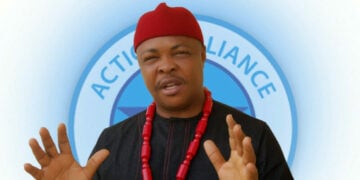On July 25, 2025, I attended my church’s monthly all-night prayer meeting for July 2025. For the past 28 years, I have made it a routine, or, better still, a religious commitment to seek God’s merciful guidance for the coming month and express my profound gratitude for His divine kindness despite my human frailties.
After hours of praise, testimonies, and prayers, we concluded the service at around 4:30 am. On my way home, nature called, and I took a brief nap to avoid driving while fatigued. When I discussed tyre blowouts last week, I promised to consider excessive speeding and fatigue among the dangerous trio. Today, I wish to fulfill that promise by highlighting one crazy road safety risk behavior that we often treat mildly.
Like I once told a friend, especially for those who believe in God, there is no prayer point for binding sleep and fatigue. The remedy remains rest and sleep, as nature cannot be treated with levity.
For the record, I must first remind you that road safety is a shared responsibility. As we navigate this wet and rainy season, dictated by climate change, this material on fatigue is to help road users guard against avoidable tragedies, deaths, or multiple injuries. Although data on road crashes to justify the danger of fatigue in our climate is scarce, globally, fatigue remains a hidden killer. Many have died in the name of tyre bursts, speed, or dangerous overtaking when, in fact, the real factor may have been fatigue that was ignored.
What is fatigue? Before answering this, let me inform you that there are three types of fatigue: transient fatigue, cumulative fatigue, and circadian fatigue. Transient fatigue is brought on by extreme sleep restriction or extended hours awake within one or two days. Cumulative fatigue is a build-up of tiredness and decreased performance that results from inadequate recovery between periods of physical or mental exertion. Circadian fatigue occurs when the circadian clock in the brain, which drives daily behavioral and physiological rhythms, is not synchronised with ‘real’ local time.
According to the Australian Transport Safety Bureau, a combination of any of the following warning signs means the driver is becoming fatigued: yawning, eyes feeling sore or heavy, vision starting to blur, daydreaming, not concentrating, becoming impatient, reactions seeming slow, speed creeping up and down, making poor gear changes, wandering over the center line or onto the road edge, feeling stiff or cramped, seeing things, feeling hungry or thirsty, having difficulty keeping your head up or eyes open, hearing a droning or humming in your ears, or not noticing a vehicle until it overtakes you.
When you notice these signs, please don’t ignore them. Don’t plead the blood, bind the devil, or speak in tongues. It’s not the devil, your in-laws, or your landlord; it’s you. Once fatigue sets in, there’s little you can do except stop as soon as possible and take a break. Driving with fatigue can be just as deadly as drunk driving or excessive speeding.
Fatigue is caused by lack of sleep or broken sleep. Alcohol and some medications can also cause sleepiness. Although the need for sleep varies among individuals, sleeping eight hours in 24 hours is common. The effect of sleep loss builds up, and regularly losing 1 to 2 hours of sleep a night can create a ‘sleep debt’ and lead to chronic sleepiness over time.
Like all other driving habits or problems, fatigue has its fair share of myths. Some believe it’s safer to make long trips at night to avoid daytime traffic, save on costs, and time.
However, your body has a normal 24-hour rhythm pattern built into it, and driving when you would normally be sleeping increases the chances of falling asleep at the wheel.
There’s also the notion that starting a trip after work is a good idea. Some believe they can cope with driving long or short distances, despite work pressure, and other engagements. However, traveling after work is not ideal, and the safest thing to do is to get a good night’s sleep (about 7-8 hours) and start your journey the next morning.
Some think that loud music will keep you awake, but it may only help for a while and could even distract you from driving or send you to sleep. Coffee or caffeine is only a short-term solution and will have less effect the more often you use it. Sleep remains the long-term solution.
This reminds me of a personal experience at the University of Lagos. After a good meal, my friend suggested we buy kolanut and top up with his favorite Saint Morris. Barely thirty minutes later, he started dozing and couldn’t continue reading, indicating that combined caffeine from gworo (kolanut) plus cigarettes is no substitute for sound sleep.




